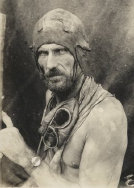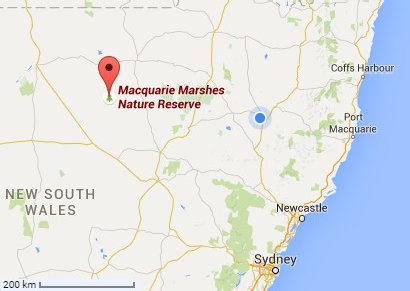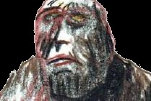Early References to "Yowie"

Contact

Home
SPELLING OF NATIVE NAMES.
The Sydney Morning Herald
Date: May 8, 1899
Page Number: 4
TO THE EDITOR OF THE HERALD.
Sir,
Referring to your correspondent, Mrs. M. M. Huntley's letter in your issue of to-day,
I would call your attention to the fact that at the last meeting of the Australasian Association for the Advancement of Science, held
in Sydney in January, 1898, the following recommendation was forwarded by the committee of section F (ethnology and anthropology)
but it was received too late for consideration by the general council:- "We recommend to the general council that communication
be entered into with the Governments of the respective colonies directing their attention to the desirability of the adoption by them
of a uniform system of spelling native words, either names of places or other names, in accordance with the system adopted by the
Royal Geographical Society of England and the Admiralty."
In the late Mr. Richard Hill's letter on "Aboriginal Names"
in the "S.M. Herald," dated June 6, 1890, he said:- "The name of the place where the great navigator Cook landed is 'Kundel,' now
corrupted into 'Colonel.'... While there, however, one of his crew, named Sutherland, died, and was buried a little to the north of
where the first landing took place. A little further on to the north is a small beach, 'Milgurrung,' where a large supply of fresh
water runs into the bay. On the hill which overhangs it the late Mr. Connell built a cottage, now in ruins,.. . A short distance to
the south-east of 'Kundel' and the entrance of Botany Heads is to be found a brass plate let into the rock (I forget the inscription
on it) to commemorate the landing of Cook; further on is 'Yinna,' now called 'Yeena' by the whites. The name 'Yinna' is the native
name of a well-known shrub or tree, honey- suckle, growing in abundance, overhanging the place so named, and is a favourite place
among our fishermen. A little further on is 'Tobagoin' and 'Curranulla Point,' and still further is the well known sea
beach of the same name, and at its southern extremity, or nearly so, is the entrance of the beautiful estuary 'Port Hacking.' Here
the blacks used to assemble in large numbers, where fish and wallaby could be found without stint. The name of the first beach on
the north side is 'Goonamatta,' the western head or point is 'Boorranea,' and was a favourite dancing place of the blacks, and when
they assembled there for that purpose they took with them small bags and drums made out of possum skins, which the 'gins' beat with
their hand, as a species of music for the rest to dance to. The next point now called by the whites 'Tareel Point,' is 'Gerrale,'
after the well known tree Lilly Pilly there in abundance. The next point is 'Yowie,' which means 'Cooey,' and being a prominent point,
the blacks when travelling north used to cooey to their friends on the north, and were brought over in the canoes, the only conveyance
at their disposal at that time . . . While here I may mention, to show how easily names are corrupted, that 'Bottle Forest' (now Heathcote)
was so called because a bottle was found by the surveyors that surveyed that locality. The aboriginal name of this place is 'Wennagaruug.'
I will now leave this place and say a few words about the north shore at Botany, including the spot where the great French navigator
'La Perouse' landed, and where the doctor of that expedition was buried. 'Currawol' is the name of the beach and point... And further
to the westward are two prominent points - 'Yarra' and 'Bumbia.' On the eastern side of 'Currawol' are the big and little 'Kong Wong,'
and then we come to the head 'Yamba,' now called Henry Head . . . The aboriginals about Sydney spoke the language known as 'Turruwul.'
The North Shore aboriginals were known us 'Camararaggal," their district being 'Camaray.' The Botany aboriginals were the 'Gineagal,'
their country being known us 'Ginea.' That was the name of the South Botany tribe, the tribe on the North Shore being known
as 'Cadigal' from their district 'Cadi.' "
I am, &c.,
F. S. ELLIS HOLT.
May 4.
The term “Yowi” is often seen in the literature when directly quoting Aboriginal speech from the mid/late 1800s into the early 1900s:
Barrier Miner (Broken Hill, NSW)
Date: June 12, 1911
Page Number: 4
…
This 'Yow-i' is a general affirmative, but by various inflections of speech can be made to express other meanings.
…
An Aboriginal Legend
The Northern Miner (Charters Towers, Qld)
Date: June 26, 1914
Page Number: 2
("Sydney Mail.")
Is some basalt country near the MacQuarie River there are two rather strange volcanic outcrops about which the blacks
had the following legend:--
Away at the back of the Mookerawa, towards the Canoblas, lived Yowie, the all-powerful magician of the
Waradgeries, who under his rule lived with ease, for he demanded tribute from all weaker neighbouring tribes. Yowie, besides being
all-powerful on earth, had charge of the underworld, where his bidding was done by the giant gecko lizards, whose ferocious heads
and huge red eyes and tails filled the hearts of the beholders with an awful fear, and whose roars when angry made the ground shake.
Among the gins and ennas of Yowie's gunyahs were two beautiful girls, Wanga Wanga and Illa. Wanga Wanga, like her lovely namesake
flower, was graceful and clinging. Illa, "the swallow," was quick and full of daring, with a mind that ever twisted and turned like
the swallow in flight.
One day the girls, tiring of the ceaseless chatter of the women, wandered far over strange country, through
forest of birribangiral and myall, until they reached the open ground along the river.
"Oh, who are those?" whispered Wanga Wanga,
poised ready for flight, light as thistledown, as two warriors of the Parkingee tribe came in sight. That tribe, driven by hunger
and drought from the Darling, defying the laws of Yowie, who decreed that none should enter his land without permission, were camped
hunting and fishing along the river, a hardy, fearless people, used to a ceaseless fight against nature. They feared no man and heeded
little the stories they had heard of Yowie's supernatural powers.
"Run !" cried Wanga Wanga. "Little that would avail; they are swifter
and stronger than we. Let us stay," Illa boldly said, so they waited until the Parkingees, Goolah and Birrigirrah, came up and saluted
them. Then they bowed with all the grace of the daughters of the hills, making the sign of peace.
Charmed with the loveliness of the
girls, the men followed then, chanting songs of battles and singing softly of love, through the forest almost to within sight of the
gunyahs.
Nor was this the only meeting. Again and again the girls stole out, to wander through the forests, dim with purple light
of the stars and rich with the scent of countless flowers, listening to pleadings old as the everlasting hills, until they promised
to leave the Waradgeries and join the Parkingees when the latter tribe returned to the Darling after the welcome rains had fallen.
All would have gone well, for Yowie, growing pleasure-loving, bothered himself little about outside affairs; but Weeja, jealous of
the beauty of the two girls and the attention Yowie paid them, grew suspicious of their wanderings, watched them, and discovered the
Parkingees' encampment, and, listening, overhead all the plot.
Hastening to Yowie she threw herself at his feet and told all. Frightful
indeed was his wrath. Summoning his geckos, he commanded them to go below the earth and bring up the ever-lasting fire, pour it along
the valley of the river, and overwelm the daring tribe. Seeing, however, the girls with their lovers fleeing before the flood of fire,
he decided to save them, for he remembered that they were most beautiful. So commanding two huge heaps of stones to be piled in advance
of the flood, he cried to the girls, "Choose, Oh! false daughters. Stand on those stones and be saved, or perish with your lovers."
'" I have chosen," cried Wanga Wanga, as with lovely arms out-stretched she turned to her lover and walked with him into the flames.
But Illa, terrified by the awful flood, flung herself down on the stones, and closing her eyes to the fearful fate of her lover saved
her own life.
The flood of molten lava got beyond control and destroyed all the hunting ground of the Waradgerles. So the people gradually
deserted Yowi and broke up his power.
Advocate (Burnie, Tas)
Date: July 9, 1926
Page Number: 2
Place Names:
The Australian Museum, has issued a captivating little pamphlet that will be of interest to Coastal people, as well as
to visitors. It gives the meanings of many aboriginal place-names, and incidentally will supply names for many houses. For instance,
there are interpretations like these:--Bega, big camping-place; Katoomba, falling water; Tambaroora, place of ibis; Collaroy, long
swamp road; Dandaloo, hail; Illawarra, pleasant place; Mudgee, a nest; Parramatta, place where the eels lie down; Uralla, camp; Wallerawang,
plenty of water; Yamba, a headland; Yowie, place of echoes; Yallambee, to dwell or stay.
Aboriginal Ghosts.
Cairns Post
Date: February 6, 1931
Page Number: 2
All primitive people believe in ghosts. The Australian blacks, who had no gods, no worship, no real religion apart from their belief
in magic and the ceremonious veneration of certain great mythical ancestors, believed in man's survival after death and in numerous
supernatural creatures which haunted the bush by day or night. These were not necessarily evil or dangerous.
To most of us the best-known
aboriginal bogey man is the bunyip. This was a monster who lived in deep water-holes and pulled men under whenever he could. He did
not wander abroad, but his voice was frequently heard at night like a loud bellowing. The bunyip was only to be seen in calm weather,
when he sometimes came to the surface. Probably the hollow note of the Australian bitterns explains the nocturnal cry.
The Kruben
tribes were much more numerous, and were evil spirits which also lived in waterholes, though sometimes inside the trunks of trees.
They carried off children whenever they got a chance, and aboriginal mothers quietened their little ones by the mention
of that dread name.
Still more dangerous were the Euloowayi, the long-tailed devils, who might be seen coming eastward
out of the sunset just as the sun disappeared below the horizon. It was then that they roved abroad on their victim hunting, and they
could take various forms. Whenever they caught a blackfellow they would cut him open, and afterwards fill him up again with grass.
Besides
such evil tribes there were certain disconnected spirits, each the only one of its kind. 'There was the prowling Brewin, a kind of
aboriginal vampire, human in appearance. There was also the dreaded white ghost Burga, always abroad in the dark. He would set upon
and kill any blackfellow he met.
Maamba was a much-feared ghost, who did not belong particularly to the night or darkness. It was he
who possessed the medicine men or native magic makers. Another unfriendly being was Bellin-Bellin, who kept the whirlwind in his skin
bag, and sometimes appeared near the camps in the form of a bird.
In thick scrub country one was especially liable to meet the savage
red ghost or devil--a half, human thing which killed every blackfellow he met and immediately devoured him.
Koin
(Coin or Kohin) was one of the dread names most frequently on the lips of the people. He was of huge stature, and a camp fire always
attracted him. He would be heard stirring about just beyond the circle of light, and he killed whenever he was able to catch a man
without a firestick. It was said that the outcry of frogs was their petition to great Koin to send rain; and the thunder was said
to be his bellowings.
In some tribes Dooloomai was the Thunderer, ''tumbling all about the sky". Others believed in an earth
dwelling "Thunderman" who lived always under water and bellowed whenever he made the rain and lightning come. He was distinct from
the bunyip.
The strongest men went in fear of meeting with the great male monster Koyorowen, also called Yaho. He might be met with
in broad daylight in a lonely part of the bush, and he always made a black fight him before the
killing. This Koyorowen had a wife named Kurriwilban; a hideous hag with a long horn growing out of eachshoulder. She would never
harm a lubra, but was a killer of men only.
The blacks believed in many other woman ghosts. One of the worst of these was Mailkun,
a fierce and evil creature who warred upon the tribes by night. The Bookoomurri were very primitive creatures for
whom the blacks had no fear. The Australians were probably unique in their belief in many ghosts that were not only not to be feared,
but were harmless, friendly towards man, or even comic. An example was little Bubba Peibi. Bubba Peibi was a squat little ghost only
about 30 inches high; he was fat, solitary and actually timid of man. One might meet him where he fished alone at a waterhole, always
talking to himself, always carrying a bundle of ludicrously tall spears. He lived in-side a hollow tree, where he kept his wife
and children; and his tree showed no signs of an opening once he had passed into it. No one feared the ridiculous little Bubba Peibi.
The
influence of white man soon became as evident in aboriginal ghost lore as in native music and corroborees. Missionaries did their
best among the blacks, but some wholly misinterpreted the native legends and concluded that this of that great ancestor was really
looked upon as the Supreme Being. Thus Nurrundere, Nurelli, Martummere, Wyirra-warree, Biamee, Biamban, Bunjil, Mungan are some of
the supposed great ancestors (some of the above are probably identical) whom the first missionaries heard of and usually translated
"God."
A great supernatural being was supposed to live on an island off the Queensland coast, and to that happy
hunting ground he directed after death the souls of all those blacks who were good. This is an example of a modern aboriginal legend
showing white influence. Again on Coolangatta mountain there is a rock weathered into grooves like those which might be made by the
feet of humans. The last of the surrounding tribes used to tell how these marks were made by dead blackfellows who set out from that
spot for the next world. The soul first passed through fire, then journeyed a long way, and ran many dangers. If he had been a good
black he passed triumphantly through all these, till he finally joined all the happy dead in a great pleasant place. If he had been
a bad fellow he suffered torments at every turn, and his final place was a region of filth and sorrow. This aboriginal heaven and
hell owes its origin to the influence of the missionaries.
The original myths of the natives never attained such
detail. To them the hereafter was Wurk-kerim, the Dark Place. There was no conception of future reward or punishment.
When a man died
his yowie or soul (as distinguished from the dowie or dream spirit, which wandered far afield while the owner slept), haunted the
place where he died or was buried. A camp was always immediately shifted after a death, for the dead man's ghost was greatly feared,
and might work harm on the tribe. It might be seen standing beside the dead body, or warming itself at a fire. Yet the corpse itself
was not at all feared. Often the bones were carried about for years, usually by the mother.
Besides the ghosts which
were so well known as to be named, there were various other ghostly tribes, which were not the spirits of dead blacks. There were
the gurly-gurlys, the shadowy people meeting for their own corroborees like the blacks, but voiceless, unsubstantial beings and unhappy.
They did no harm, and were not greatly feared.
Wailing spirits of various kinds were believed to take up their abode
in trees. No spirit could approach a fire, and a blackfellow was safe anywhere in the bush at night if he was carrying a firestick.
In Australia, as in other countries, we find the belief, too, that no evil spirit was able to cross a stream.
Explorer's Inseparable Pal
The Register News-Pictorial (Adelaide, SA)
Date: December 3, 1930
Page Number: 13
Yowie, who has just returned from a 20 months' trip to Arnhem Land with his master, Mr. Francis Birtles, looked up enquiringly when
the photographer asked if he liked city life. "Quite well," he said, "provided my master is in town."




Francis Birtles

Kámilarói and Other Australian Languages
By Rev. William Ridley
Publisher: Thomas Richards (Sydney, NSW)
Date: 1875
Page Number: 138
...
Among the Wailwun tribes “Kinirkinir” are spirits of the departed, wandering over the face of the earth. “Yo-wi” is a spirit that roams over the earth at night. “Wawi” is a snake or a monster, as large as a gum-tree (30 to 40 feet high), with a small head and a neck like a snake. It lives in a waterhole 30 miles from the Barwan ; and used to eat blackfellows. They could never slay it...

12.02.2016
[Credit: G.D.]









Reports of the
Wild-/Hairy-Man

Yowie / Bigfoot
More from Yowie-O :
The Naked Yowie Project
Aboriginal Legends: Vicious Birds
By
C. W. Peck
Sydney Mail (NSW)
Date: 23 May, 1928
Page Number: 2
...
They stayed many days, and one day when the women were out looking for "boringkoot," or raspberries, they saw what they called
a "darri" (footmark). So they watched and waited. They knew it was someone searching for them, or rather biding his time until they
knew of his presence, for he was as much spirit as they and their captor. They saw him, but he had to be cunning, and he did not come
forward until night time, when the giant was asleep. The moon shone brightly through the tall, swaying trees, and the women laughed.
The giant awoke and wanted to know at what they laughed. They replied that there was no "yowie," and they were "boolang," or cold,
and therefore they coughed. Three times that occurred, and the fourth time there was no response from the giant, for he was fast asleep.
...

29.01.2017
"yowie" = laughter


















